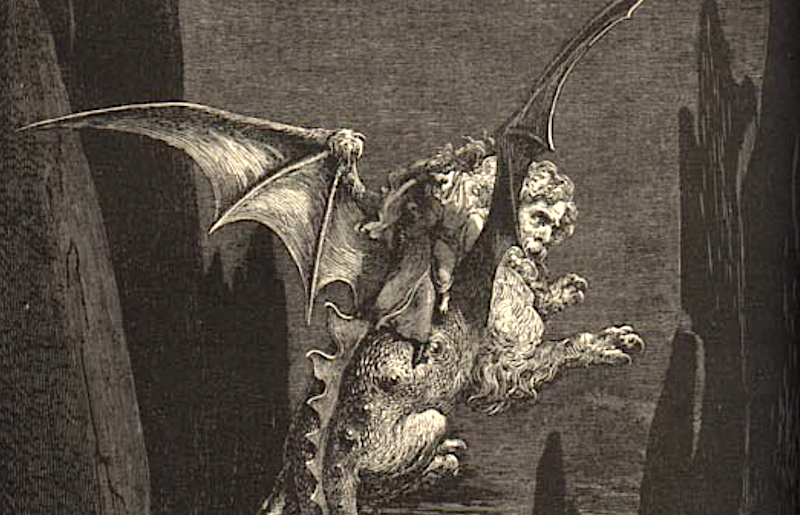
"Doré was 23 years old in 1855, when he first decid­ed to cre­ate a series of engrav­ings for a deluxe edi­tion of Dan­te's clas­sic. He was already the high­est-paid illus­tra­tor in France, with pop­u­lar edi­tions of Rabelais and Balzac under his belt, but Doré was unable to con­vince his pub­lish­er, Louis Hachette, to finance such an ambi­tious and expen­sive project. The young artist decid­ed to pay the pub­lish­ing costs for the first book him­self. When the illus­trat­ed Infer­no came out in 1861, it sold out fast. Hachette sum­moned Doré back to his office with a telegram: "Suc­cess! Come quick­ly! I am an ass!""
"Hachette pub­lished Pur­ga­to­rio and Par­adiso as a sin­gle vol­ume in 1868. Since then, Doré's Divine Com­e­dy has appeared in hun­dreds of edi­tions. Although he went on to illus­trate a great many oth­er lit­er­ary works, from the Bible to Edgar Allan Poe's "The Raven," Doré is per­haps best remem­bered for his depic­tions of Dante. At The World of Dante, art his­to­ri­an Aida Audeh writes: Char­ac­ter­ized by an eclec­tic mix of Michelan­ge­lesque nudes, north­ern tra­di­tions of sub­lime land­scape, and ele­ments of pop­u­lar cul­ture, Doré's Dante illus­tra­tions were con­sid­ered among his crown­ing achieve­ments - a per­fect match of the artist's skill and the poet­'s vivid visu­al imag­i­na­tion."
"Many artists have attempt­ed to illus­trate Dante Alighier­i's epic poem the Divine Com­e­dy, but none have made such an indeli­ble stamp on our col­lec­tive imag­i­na­tion as the French­man Gus­tave Doré."
Gustave Doré undertook an ambitious series of engravings for Dante's Divine Comedy beginning in 1855 at age 23 and financed the initial project himself. The illustrated Inferno (1861) sold out quickly and prompted publisher Louis Hachette to reverse his refusal. Hachette later issued Purgatorio and Paradiso together in 1868, and Doré's Divine Comedy has since appeared in hundreds of editions. Doré also illustrated many other major literary works, including the Bible and Poe's "The Raven." Doré's Dante images combined Michelangelesque nudes, northern sublime landscapes, and popular-culture elements and became central to his artistic reputation.
Read at Open Culture
Unable to calculate read time
Collection
[
|
...
]